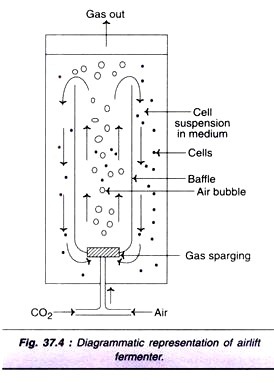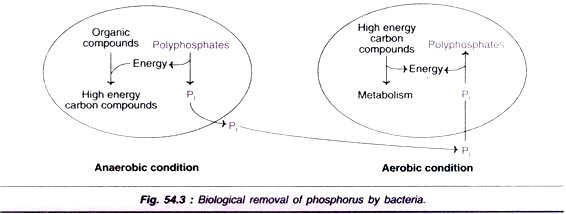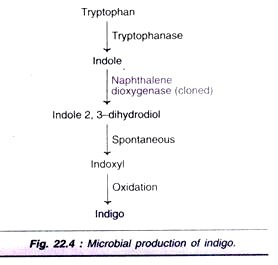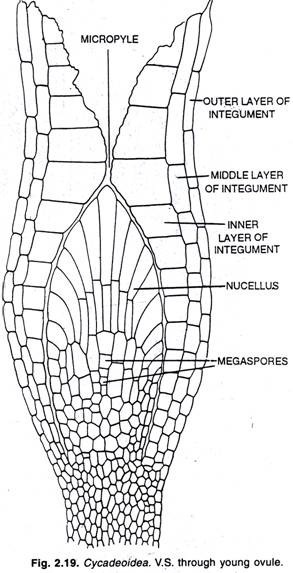In this article we will discuss about:- 1. Definition of Epistasis 2. Types of Epistasis 3. Epistasis in Drosophila 4. Epistasis and Blood Groups in Man.
Contents
Definition of Epistasis:
Due to the phenomenon of dominance a recessive allele remains obscure in the hybrid. But when two different genes which are not alleles, both affect the same character in such a way that the expression of one masks, inhibits or suppresses the expression of the other gene, it is called epistasis. The gene that suppresses is said to be epistatic, and the gene which remains obscure is hypostatic.
Types of Epistasis:
i. Dominant Epistasis:
In poultry white birds belong to two different varieties namely white leghorns or white Wyandotte’s. Experiments reveal that the gene for white plumage of white leghorns is dominant over the gene for coloured plumage of coloured varieties. But the gene for white plumage of white Wyandotte’s is recessive to the gene for coloured plumage of coloured varieties.
Therefore the gene which produces white plumage in white leghorns is different from the gene for white plumage in white Wyandotte’s. A cross between a white leghorn and a white Wyandotte gives an F1 of white birds with small dark flecks. When such birds are inbred, the F2 progeny segregates in the ratio of 13 white to 3 coloured birds.
The experiment is explained below by postulating two genes C and I for the white leghorns:
A checkerboard for the 16 phenotypes and genotypes of the F2 birds indicates that only three out of sixteen genotypes, that is iiCC, iiCc, iiCc produce coloured birds. The white leghorns obviously contain a gene I, which in the dominant state inhibits or suppresses the expression of the dominant colour gene C, resulting in white plumage.
The recessive alleles of the inhibitor gene (ii) produce coloured birds due to expression of gene C. In other words gene I is epistatic to gene C. This is a case of dominant epistasis because even one dominant allele of gene I is able to express itself.
ii. Recessive Epistasis:
Epistasis due to recessive genes is called recessive epistasis. In mice albinism (white coat) is produced by a recessive gene aa. There is a different gene B which in the dominant state (BB and Bb) produces grey coat colour called agouti, and when recessive (bb) leads to black coat colour.
The recessive gene for albinism (aa) is found to be epistatic to the gene for agouti (BB and Bb), and also to its recessive, homozygous allele (bb) for black. The presence of the dominant allele (AA) of the epistatic gene allows expression of gene B so that agouti (BB and Bb) and black (bb) coat colours can be produced (Fig. 2.2).
The 9: 3: 4 ratio obtained is a modification of the classical 9: 3: 3 : 1 in which the last two classes (3: 1) are phenotypically identical and are therefore added up together. In human beings also the recessive gene for albinism shows epistasis in a similar manner. Epistatic effect is usually only in one direction, from one particular gene pair to another.
Epistasis in Drosophila:
There are two recessive wing mutants in Drosophila: apterous (ap) which produces small stubby wings instead of the normal transparent ones; the other called cubitus interrupts (ci) which causes a small interruption in the fourth longitudinal vein (Fig. 2.3). When the two mutants are used in a dihybrid cross, the F2 progeny segregates in the ratio of 9 normal: 3 interrupted vein: 4 apterous wing.
In the cross above, the presence of the homozygous recessive mutant gene for apterous wing (ap/ap) marks the expression of the gene for interrupted vein.
Epistasis and Blood Groups in Man:
In the ABO blood group system, a person with blood group A has antigen A on the surface of red blood cells; a blood group B person has B antigen: an AB person has both A and B antigens, whereas type O has neither A nor B antigen. The antigens are controlled by an autosomal gene I (iso-haemaglutinin) which has multiple alleles. Thus IA controls antigen A, IB controls antigen B. The recessive allele i produces no antigen and results in phenotype O.
Certain proteins present in the blood serum of a person show a precise relationship with the red cell antigen. These proteins are the agglutinins or antibodies. Thus the serum of an individual with blood group A has antibodies against antigen B, whereas the serum of a blood group B person is anti-A. In persons with blood group AB where both antigens A and B are present, the serum has neither antibody A nor B; individuals with blood group O have both types of antibodies.
It has been found that there is another gene H which controls production of a precursor substance H. In persons of blood type A, having gene IA, precursor H gets converted into antigen A under control of gene IA. Similarly when gene IB is present, H gets converted to antigen B.
In the presence of the recessive allele i in type O persons, precursor H is not converted and remains as such in the blood. It can be agglutinated by anti-H or by such substances as an extract of the seeds of a plant Ulex europeus or blood of eel. In persons of heterozygous blood groups such as IA/j or IB/i only part of the H substance which is unconverted is agglutinated.
In AB persons there is likewise no agglutination of H substance. It is found that most human beings are homozygous (HH) for gene H, few are heterozygous (Hh), and very rarely a homozygous recessive (hh) individual is met with that cannot produce any H substance at all.
Such a person may have any blood group phenotype from the ABO system, but his red cells are not agglutinated by anti-A, anti-S, anti-H. First discovered in Bombay, India, a homozygous recessive (hh) person is said to show the Bombay phenotype. It demonstrates epistatic action of hh gene over I gene.
The secretor trait in humans also shows epistatic effect of genes. Just as red blood cells carry antigens on their surface, most persons have these antigens in a water soluble form in some body secretions such as saliva, gastric juice, fluids from nose, eyes and mammary glands of females. Such individuals are known as secretors. In a few persons regardless of blood group present, there are no antigens in body secretions. They are known as non-secretors.
The secretor trait is due to a dominant autosomal gene Se, whose recessive allele sd results in a non-secretor. The dihybrid inheritance pattern of secretor trait and blood groups has been studied in a large number of families. Marriages between two double heterozygotes for both blood groups and secretor trait, i.e., IAiSese x IAiSese or IBiSese x IBiSese show progeny phenotypes in the ratio 9:7 indicating epistatic interaction of genes.
The checkerboard shows that there are 9 individuals showing both dominant phenotypes (blood group A secretors), 3 type 0 secretors and 4 non-secretors. The data indicate epistatic interaction of genes.





